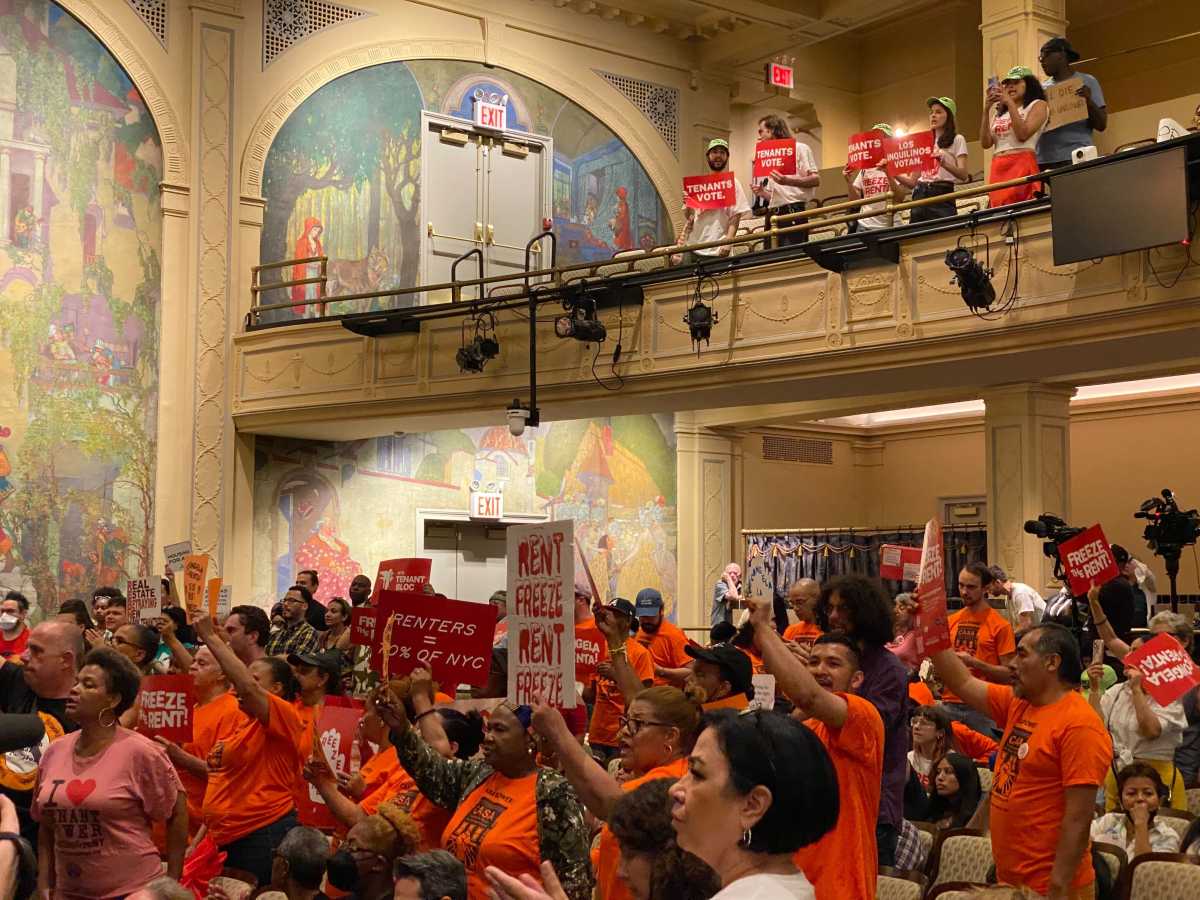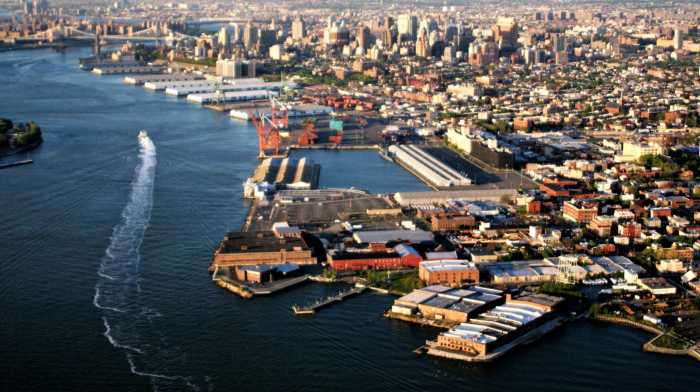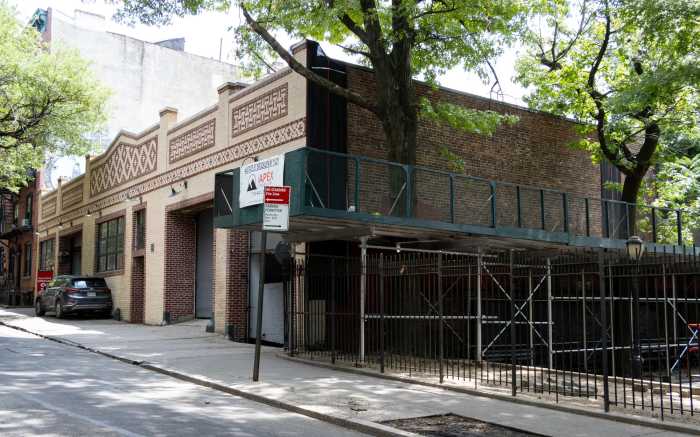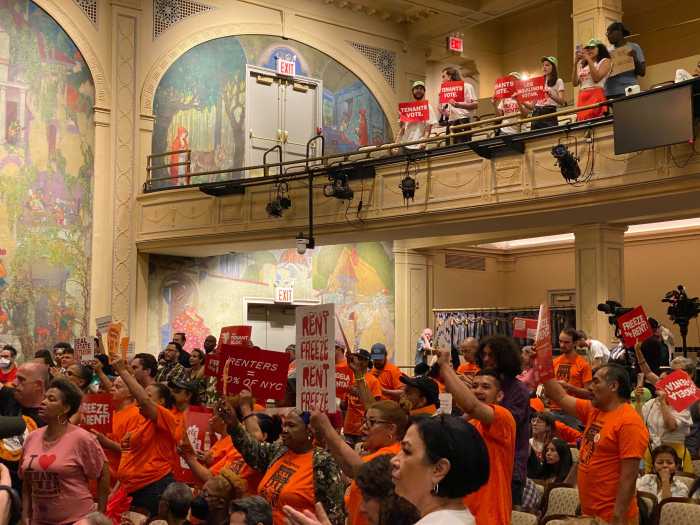It was targeted to be among the first to go, under the city’s massive
Downtown Brooklyn rezoning and redevelopment plan, but this week the Institute
of Design and Construction got a reprieve.
The City Planning Commission unveiled changes to the Downtown Brooklyn
Plan on Monday, and at the top of the list was taking the site of the
67-year-old architectural school, at the corner of Flatbush Avenue Extension
and Willoughby Street, out of the plan altogether.
“We’re elated” Vincent Battista, 58, president of the Institute
of Design and Construction, said when he learned about the change this
week.
The college was to be claimed under the government’s power of eminent
domain and then demolished to create a better view plane from Flatbush
Avenue to a 1.5-acre open space the city plans to build across the street.
The planned Willoughby Square would be modeled after Post Square in Boston,
according to city planners.
“Nobody is against progress or against construction, it’s just
a question of size and seeing people being taken care of,” said Battista,
who has criticized the city for wanting to “knock down the building
and plant grass.”
More reassuring to Battista, an early and vocal opponent of the Downtown
Brooklyn Plan, was that his property was also removed from plans to extend
the Brooklyn Center Urban Renewal Area, easing his concerns about future
condemnation of the property, as well.
Battista’s father, Vito Battista, a political maverick known for
his outlandish stunts — he once paraded around town on an elephant
— purchased the building at 141 Willoughby St. for $300,000 in 1967.
With the building paid off, the nearly $1.5 million in annual rent from
upstairs office tenants allows the building trades school to subsidize
tuition. Currently at $4,800 per year, Battista had argued the cost to
students would be nearly double without the money generated from the building
and that in order to operate in another location the school would need
a guarantee of free rent.
He had threatened to sue to stop the taking of his property. If the modified
Downtown Brooklyn Plan is approved by the City Planning Commission on
May 10 that will no longer be necessary.
Still, more than 130 residential units and 100 businesses will be displaced
by the plan, which the mayor and other officials tout as necessary to
stem the tide of corporate back-office space moving to New Jersey and
elsewhere.
The complex rezoning of 60 blocks to make way for office, residential
and academic towers and turn downtown into what city and borough officials
say will be a bustling, 24-7 hub, requires condemning at least seven acres
of private property.
The Downtown Plan would allow for the construction of at least 6.7 million
square feet of office space, 1 million square feet of retail, 1,000 units
of housing and 2,500 parking spaces.
Michael Burke, director of the Downtown Brooklyn Council, an offshoot
of the Brooklyn Chamber of Commerce that helped conceive the plan, praised
the alterations.
“We see these as positive changes,” said Burke. “The core
values of the plan are still there and we have positively responded to
the community and it’s a better plan because of it.”
Other changes announced by the planning commission Monday included cutting
out a portion of the plan area that overlaps with developer Bruce Ratner’s
Atlantic Yards development, a triangular lot at the intersection of Flatbush
and Atlantic avenues where Ratner would build the tallest of his Frank
Gehry-designed towers, a 620-foot-tall skyscraper that would be the tallest
building in the borough.
Together the Downtown Plan and Atlantic Yards would add an additional
14 million square feet of development in the greater Downtown Brooklyn
area and would require the taking of approximately 15 acres of private
land by eminent domain.
Arena opponents and those concerned about the effects of traffic and other
environmental factors packed public hearings on the Downtown Plan calling
on the city to consider the impacts of the two plans together when reviewing
the Downtown Plan. When those calls went unheeded, Fort Greene-Prospect
Heights Councilwoman Letitia James, whose district includes portions of
both plans, called on the Atlantic Yards block to be removed from the
Downtown Plan boundary.
The move was something of a formality, however, as the Ratner development,
because it is likely to be spearheaded by the state, will not have to
undergo city review, nor abide by city zoning regulations, according to
city and state officials.
Some of the other changes put forth by the planing commission this week
will benefit other local academic institutions.
The commissioners also excluded two buildings on Livingston Street near
Hanover Place, where Long Island University is looking to build additional
classrooms.
Long Island University was in discussions to develop the property before
the city announced, as part of the Downtown Plan, it would extend the
period of the urban renewal area in which they sit for another 40 years.
In another modification, any development on the site at Boerum Place and
Fulton Street — which is targeted by the plan for high-rise development
— will now have to include 100,000 square feet of higher education
space. The site, owned by Brooklyn Law School, is across the street from
the college.
“We currently own and occupy space at 1 Boerum Place that is integral
to our educational mission and we look forward to maintaining our presence
in any future development that occurs on that site,” Law School officials
said in a written statement in response to questions about the modifications
this week.
Many community members and elected officials labeled the changes a victory,
while many others said there was still more to be done in order to make
the plan a “win-win” for the community.
“I’m happy that we were able to save the school and we’re
still negotiating about two other items,” said James.
She is now working with several community members along Duffield Street
whose homes and businesses would likely be taken to make way for office
towers.
Some of those residents claim the Underground Railroad ran beneath their
property and should therefore be preserved.
“A big fight for me right now is trying to save those homes,”
said James.
Winston Von Engel, deputy director of the Brooklyn office of the Department
of City Planning said the city has not been able to find any evidence
linking the homes with the Underground Railroad but would have to do an
archeological assessment.
Lewis Greenstein, who owns a 150-year-old, brown clapboard residential
and commercial building at 233 Duffield St., said it was “disheartening”
that the city was not going to preserve the buildings and vowed to continue
the fight.
James is also pushing for height restrictions on buildings along Flatbush
Avenue, which falls in her district.
Over the past several months community members have voiced their concerns
at public hearings hosted by Community Board 2 and Borough President Marty
Markowitz. Traffic and public transportation issues topped the list of
concerns.
The community board failed to make a recommendation on the plan, while
Markowitz voted in favor of the plan last month but submitted a dense
list of recommendations, including sparing the Institute of Design and
Construction.
“I fully expect that the money saved by the city not acquiring the
Institute of Design and Construction will be spent on parkland in the
community. However, I hope that … my recommendations, especially
my desire to see significant affordable housing will be included in this
plan,” Markowitz said this week.
Traffic consultant Brian Ketcham said the plan should be put on hold until
the city conducts a major traffic masterplan for downtown.
According to Ketcham, the downtown rezoning will bring an additional 17,500
cars and 95,000 subway riders each day.
That doesn’t include the other surrounding development either planned
or approved for the area including the nearly 8 million square feet of
development at the adjoining Atlantic Yards site.
Downtown Councilman David Yassky is generally supportive of the plan,
his aides say, but has concerns over traffic and transportation. He did
not return calls seeking comment on the plan.
Preservations are also pushing the city to consider saving several downtown
buildings.
The Brooklyn Heights Association (BHA) and other local community groups
have joined forces with the Municipal Art Society to seek the city landmark
designation of 16 buildings in Downtown Brooklyn that could face demolition
as part of the Downtown Brooklyn Plan..























